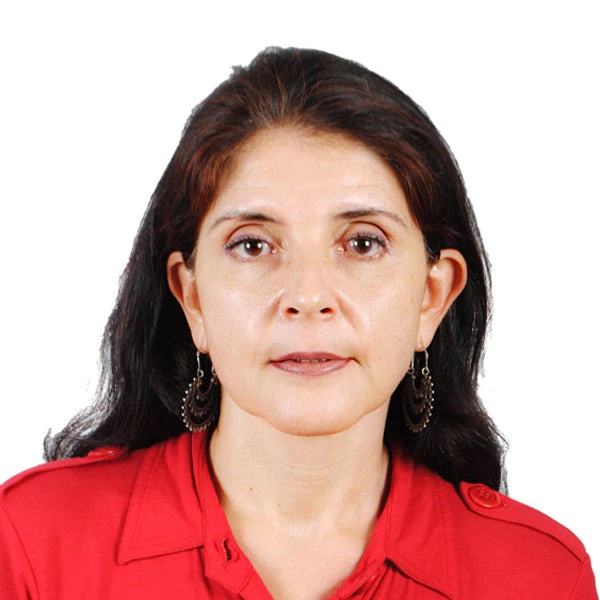 Impact of COVID-19 on Thailand's households
Impact of COVID-19 on Thailand's households
As COVID-19 spread around the world, Thailand, the second country to report COVID-19 cases, responded with swift and multifaceted schemes that included public health measures, social protection, and fiscal policy. The strict and rapid public health response resulted in keeping the number of COVID-19 cases low in Thailand (3,800 cases and only 59 deaths by September 2020).
In April 2020, the Thai government passed a 1 trillion baht borrowing decree to address health needs, provide relief, and economic recovery. An estimated 44 million Thais have benefitted from this social assistance and social insurance programs during the pandemic. Poverty increased by 0.2 percentage points from 6.2 percent in 2019 to 6.4 percent in 2020. In the absence of the compensation package, poverty would have increased to 7.4 percent in 2020.
Thailand’s economy was projected to start recovering in 2021, however, subsequent waves of COVID-19 infections, emergence of new COVID-19 variants and slow progress in vaccination have triggered new strict containment measures. As a result, economic activity is not expected to recover to its pre-pandemic levels until 2023, with the recovery being slow and the vulnerable group bearing a disproportionate burden.
In understanding the impact of COVID-19 on the Thai population, the World Bank, in conjunction with Gallup Poll, conducted a rapid phone survey from April 27 to June 15, 2021. The survey, which involved 2,000 adults aged 18 years and older, was conducted using Computer Assisted Telephone Interviews (CATI), in which respondents used a telephone line to answer individual and household questions, such as employment, income, food security, access to health services and COVID-19 vaccine, and education.
As the fourth wave of COVID-19 hit Thailand in 2021, the recovery within vulnerable groups has slowed down and borne a disproportionate burden. National employment has remained at a stable level of 68% since the onset of the pandemic, though there were variations between regions and population groups. While employment in urban areas declined, it increased in rural areas as people who lost their jobs in the cities went back to work in agriculture. Fifty percent of the respondents’ jobs were disrupted due to COVID-19, varying from job losses to reduced number of working hours and reduced pay. This significantly affected individuals in low-income households, women, individuals in low education groups, and those in the South. Married women and individuals with children have also been burdened with care work during the pandemic.
The survey indicates that more than 70 percent of households experienced a decline in income. In spite of the number of employment in rural areas that increased, households in rural areas and low-income groups reported that 80 percent of them experienced a decline in income. About a half of individuals working in farm and non-farm businesses lost over half of their incomes. This decrease in income resulted in the proportion of social assistance beneficiaries almost doubling in 2020 as compared to 2019, covering over 80% of the households. The Thai government introduced the ‘Let’s Go Halves’ co-payment scheme for non-farm businesses where shoppers only pay 50 percent for products from participating vendors and retailers. As for farming households, they benefited from the ‘No One Left Behind’ program, reaching 80 percent of them, which provided monthly cash transfers to informal or self-employed workers, and the similar farmers assistance program, covering more than 63 percent of them.
Government assistance was not enough to offset the negative coping mechanisms, especially within the low-income households. Income declines forced households to reduce their food and non-food consumption. Around 60% of low-income households and of women in households with children ran out of food, and 40 percent were hungry but did not eat. The proportion of those who went a whole day without food was over four times higher in the low-income group households than in the better-off ones. Half of the interviewed households were still worried that they would not be able to buy food for the next week.
The fear of being infected by COVID-19 and the lack of financial resources were the main reasons access to medical services in Thailand was limited during the pandemic. Although half of the respondents indicated that there was a COVID-19 testing center in their community, access and use of these test centers is still limited as only 16 percent of the respondents have been tested. Most people know and are aware that there is a COVID-19 vaccine and know where to get it, however, the vaccination rates are still slow. Additionally, vaccine hesitancy is high among the low education and low-income groups, and within the youth. This hesitancy is driven by the concern of vaccine side effects.
The pandemic continues to be a challenge for children’s education. Ninety percent of households had school-aged children that attended school last semester, with half of them attending in hybrid mode and a quarter attending in-person. It is important to note that the proportions were lower in rural and lower-income households, and those in the South. Households cited concerns over catching the virus, lack of financial means, and lack of school readiness among primary reasons for not sending their children to school. More than half of the households reported that children have encountered learning difficulties during these times due to inability to focus without adult supervision and lack of access to learning devices. Furthermore, since learning devices and internet connection play an important role in distance learning, children in low-income and rural households may face educational challenges more significantly. This negative effect on human capital may contribute to poverty and inequality in the long run.
With challenges posed by the pandemic, inclusive policy that focuses on the vulnerable groups should be prioritized in Thailand. On top of that, vaccination coverage and health communication interventions should be improved to allow individuals to live their lives closer to normal. With this policy approach, Thailand could hopefully recover quickly and be able to bring back momentum for poverty reduction.



Join the Conversation